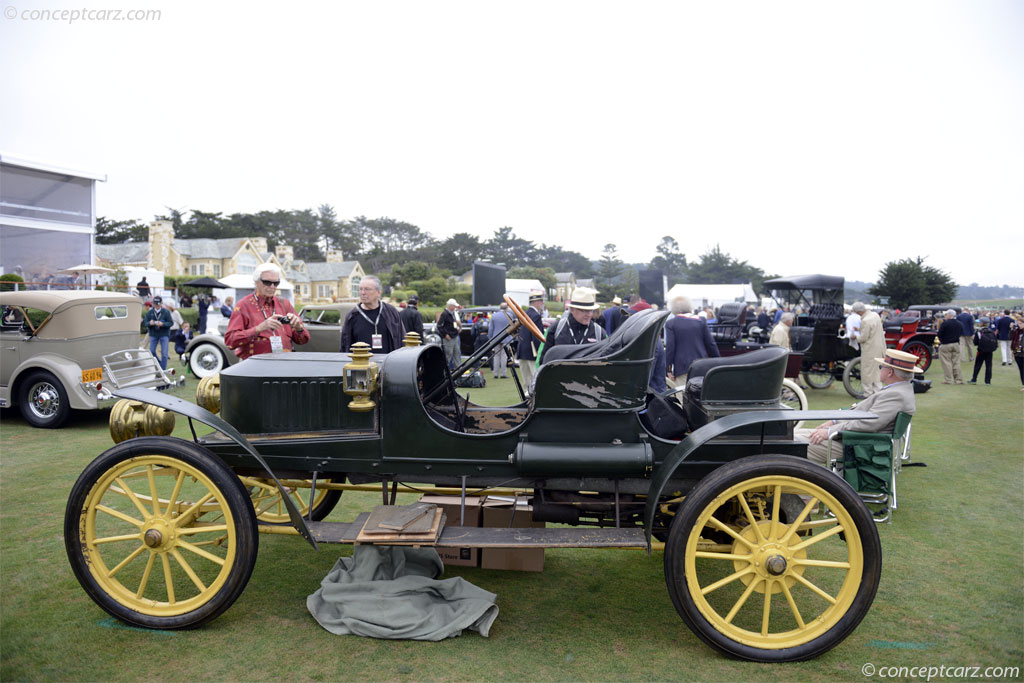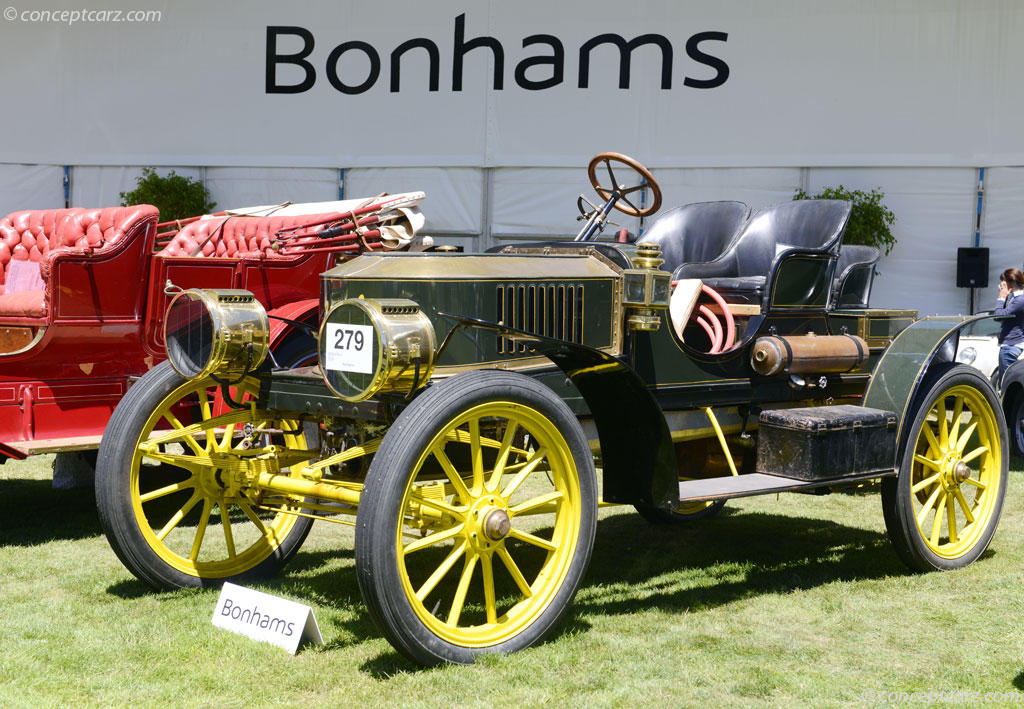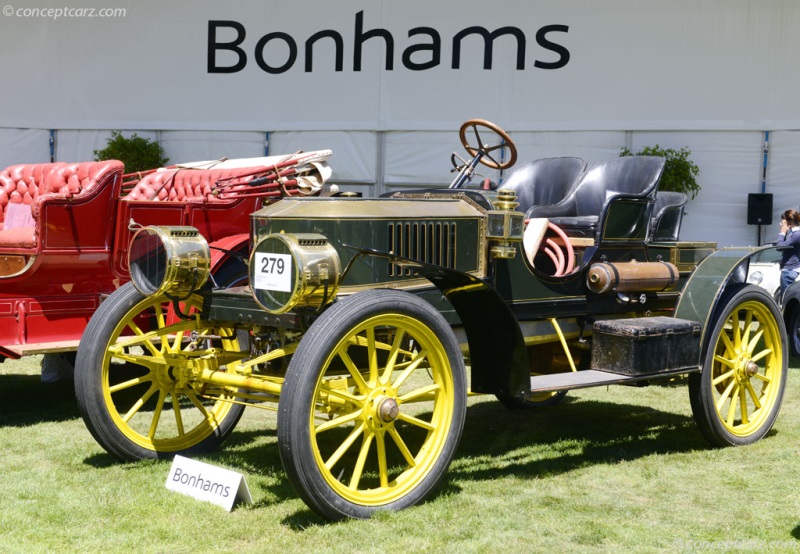Francis E. and Freeland O. Stanley were identical twins from Kingfield, Maine, whose Stanley Dry Plate Company made a small fortune in producing photographic equipment. The brothers also designed steam cars, experimenting with a solitary prototype in 1887, and returning to the project in 1897. A year later, they had completed three more prototypes, one of which successfully scaled an 80-foot incline in Charles River Park, Boston, that had defeated its rivals. The spectacular demonstration resulted in orders for 200 cars, prompting the Stanley brothers to commence production. A few vehicles were constructed before the business was sold to outside investors. Within a few years, they repurchased the company at a fraction of the sales price and began production of a completely new model.
Semi-Racer
View info and historyThe automotive press announced new models in January 1902, departing with previous designs and technology and embracing a larger 70-inch wheelbase. The previous transverse front spring was replaced by full-elliptic springs, oriented longitudinally, on all four corners. There was a front seat, which allowed carrying two more passengers, their feet resting on a toe-board that doubled as a toolbox cover when closed. The Stanley automobiles relied on a double-acting two-cylinder engine with a fire-tube boiler that was reinforced with piano wire and fitted with a safety valve. The early Stanley vehicles did not incorporate any sort of recovery system, so vented steam was lost to the atmosphere. After 1914, that issue was resolved with a fairly efficient condenser system, resulting in greater distances traveled between water refills. The early Stanley automobiles had buggy-like designs, with the boiler and valve controls located under the seat. Later models embraced more conventional designs, with the boiler and motor relocated under a boxy, coffin-like nose and the drive taken to the rear wheels.
Semi-Racer
Chassis #: 3810
Engine #: 22388
View info and history
Auction entries : 1The Stanley Model K had a 108-inch wheelbase, a fuel capacity of 13 gallons, and a water capacity of 26 gallons. The boiler had a 26-inch diameter and a height of 16 inches, with a 4.5-inch bore and a 6.5-inch stroke. A 1908 Stanley Steamer two-passenger Model K Semi-Racer had a base price of approximately $1,800.
by Daniel Vaughan | Nov 2023

Semi-Racer
View info and history

Semi-Racer
Chassis #: 3810
Engine #: 22388
View info and history
Auction entries : 1
by Daniel Vaughan | Nov 2023
Similarly Priced Vehicles
1908 Stanley Steamer Model K Vehicle Profiles
Recent Vehicle Additions
Related Automotive News
J.D. POWER AND LMC AUTOMOTIVE REPORT
May New-Vehicle Retail Selling Rate Expected to be 1 Million Units Stronger than a Year Ago
WESTLAKE VILLAGE, Calif., May 23, 2013 - Robust new-vehicle retail sales in May are the driving factor of returning total sales above the 15-mil...
RAGAN GIVES FRONT ROW MOTORSPORTS FIRST NASCAR WIN AS FORD SWEEPS TOP THREE SPOTS AT TALLADEGA
Ford Racing Results
1st – David Ragan
2nd – David Gilliland
3rd – Carl Edwards
9th – Scott Speed
10th – Aric Almirola
13th – Ricky Stenhouse Jr.
14th – Marcos Ambrose
15th – Brad Keselowski
19th – Josh Wise
21st – Michael McDowell
24th – Casey...

FULL STEAM AHEAD FOR HISTORICS
Stanley Steamer takes centre stage for spring sale
Brooklands will provide the backdrop for the ultimate MPV – built long before the category was even invented – when a 1917 20hp Stanley Mountain Wagon crosses the block on Saturday March 9t...

Red Bull Racing: 2012 Formula One World Champions
Fourth Team in History to Achieve Three Consecutive Titles Team Takes its Third World Title in Eight Years
Car 1 SEBASTIAN VETTEL, Finish Position 2nd, Start Position 1st
Im very, very happy for the team to win a third Constructors....

See Vintage Steam Cars at this year's Glenmoor Gathering
One of the highlighted features of the 2012 Gathering will be steam-powered automobiles. At the end of the 19th century, steam was king—and proven. It powered industrial machinery, ships and railroad locomotives. It was only natural that steam was used...



























